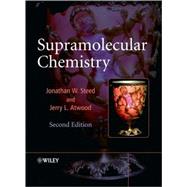
Jerry L. Atwood was born in Springfield MO, USA in 1942. He attended Southwest Missouri State University, where he obtained his B.S. degree in 1964. He carried out graduate research with Galen Stuckey at the University of Illinois, where he obtained his Ph.D. in 1968. He was immediately appointed as an Assistant Professor at the University of Alabama, where he rose through Associate Professor (1972) to full Professor in 1978. In 1994 he was appointed Professor and Chair at the University of Missouri – Columbia. Professor Atwood is the author of more than 600 scientific publications. His research interests revolve around a number of themes in supramolecular chemistry including gas storage and separation and the control of confi ned space. He has also worked on the self-assembly of noncovalent capsules, liquid clathrate chemistry, anion binding and fundamental solid state interactions, and is a world-renown crystallographer. He co-founded the journals Supramolecular Chemistry (1992) and Journal of Inclusion Phenomena (1983). He has edited an enormous range of seminal works in supramolecular chemistry including the fi ve-volume series Inclusion Compounds (1984 and 1991) and the 11-volume Comprehensive Supramolecular Chemistry (1996). In 2000 he was awarded the Izatt-Christensen Prize in Supramolecular Chemistry.
| About the Authors | |
| Preface to the First Edition | |
| Preface to the Second Edition | |
| Acknowledgements | |
| Concepts | |
| Defi nition and Development of Supramolecular Chemistry | |
| Classifi cation of Supramolecular Host-Guest Compounds | |
| Receptors, Coordination and the Lock and Key Analogy | |
| Binding Constants | |
| Cooperativity and the Chelate Effect | |
| Preorganisation and Complementarity | |
| Thermodynamic and Kinetic Selectivity, and Discrimination | |
| Nature of Supramolecular Interactions | |
| Solvation and Hydrophobic Effects | |
| Supramolecular Concepts and Design | |
| The Supramolecular Chemistry of Life | |
| Biological Inspiration for Supramolecular Chemistry | |
| Alkali Metal Cations in Biochemistry | |
| Porphyrins and Tetrapyrrole Macrocycles | |
| Supramolecular Features of Plant Photosynthesis | |
| Uptake and Transport of Oxygen by Haemoglobin | |
| Enzymes and Coenzymes | |
| Neurotransmitters and Hormones | |
| Semiochemistry in the Natural World | |
| DNA | |
| Biochemical Self-Assembly | |
| Cation-Binding Hosts | |
| Introduction to Coordination Chemistry | |
| The Crown Ethers | |
| The Lariat Ethers and Podands | |
| The Cryptands | |
| The Spherands | |
| Nomenclature of Cation-Binding Macrocycles | |
| Selectivity of Cation Complexation | |
| Solution Behaviour | |
| Synthesis: The Template Effect and High Dilution | |
| Soft Ligands for Soft Metal Ions | |
| Proton Binding: The Simplest Cation | |
| Complexation of Organic Cations | |
| Alkalides and Electrides | |
| The Calixarenes | |
| Carbon Donor and -+-acid Ligands | |
| The Siderophores | |
| Anion Binding | |
| Introduction | |
| Biological Anion Receptors | |
| Concepts in Anion Host Design | |
| From Cation Hosts to Anion Hosts - a Simple Change in pH | |
| Guanidinium-Based Receptors | |
| Neutral Receptors | |
| Inert Metal-Containing Receptors | |
| Common Core Scaffolds | |
| Ion Pair Receptors | |
| Simultaneous Anion and Cation Binding | |
| Labile Complexes as Anion Hosts | |
| Receptors for Zwitterions | |
| Molecular Guests in Solution | |
| Molecular Hosts and Molecular Guests | |
| Intrinsic Curvature: Guest Binding by Cavitands | |
| Cyclodextrins | |
| Molecular Clefts and Tweezers | |
| Cyclophane Hosts | |
| Constructing a Solution Host from Clathrate-Forming Building Blocks: The Cryptophanes | |
| Covalent Cavities: Carcerands and Hemicarcerands | |
| Solid-State Inclusion Compounds | |
| Solid-State Host-Guest Compounds | |
| Clathrate Hydrates | |
| Urea and Thiourea Clathrates | |
| Other Channel Clathrates | |
| Hydroquinone, Phenol, Dianin's Compound and the Hexahost Strategy | |
| Tri-o-thymotide | |
| Cyclotriveratrylene | |
| Inclusion Compounds of the Calixarenes | |
| Solid-Gas and Solid-Liquid Reactions in Molecular Crystals | |
| Crystal Engineering | |
| Concepts | |
| Crystal Nucleation and Growth | |
| Understanding Crystal Structures | |
| The Cambridge Structural Database | |
| Polymorphism | |
| Co-c | |
| Table of Contents provided by Publisher. All Rights Reserved. |
The New copy of this book will include any supplemental materials advertised. Please check the title of the book to determine if it should include any access cards, study guides, lab manuals, CDs, etc.
The Used, Rental and eBook copies of this book are not guaranteed to include any supplemental materials. Typically, only the book itself is included. This is true even if the title states it includes any access cards, study guides, lab manuals, CDs, etc.